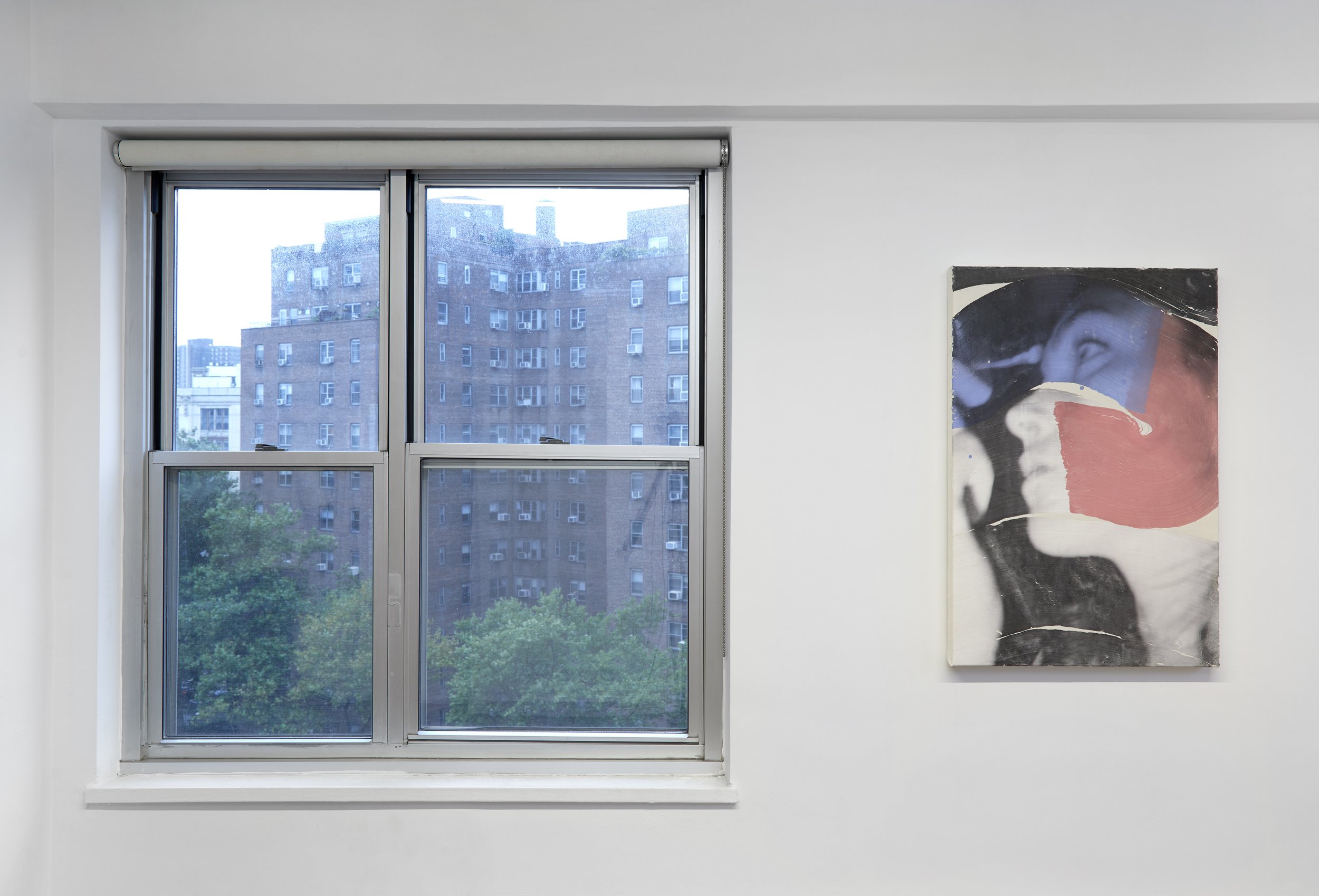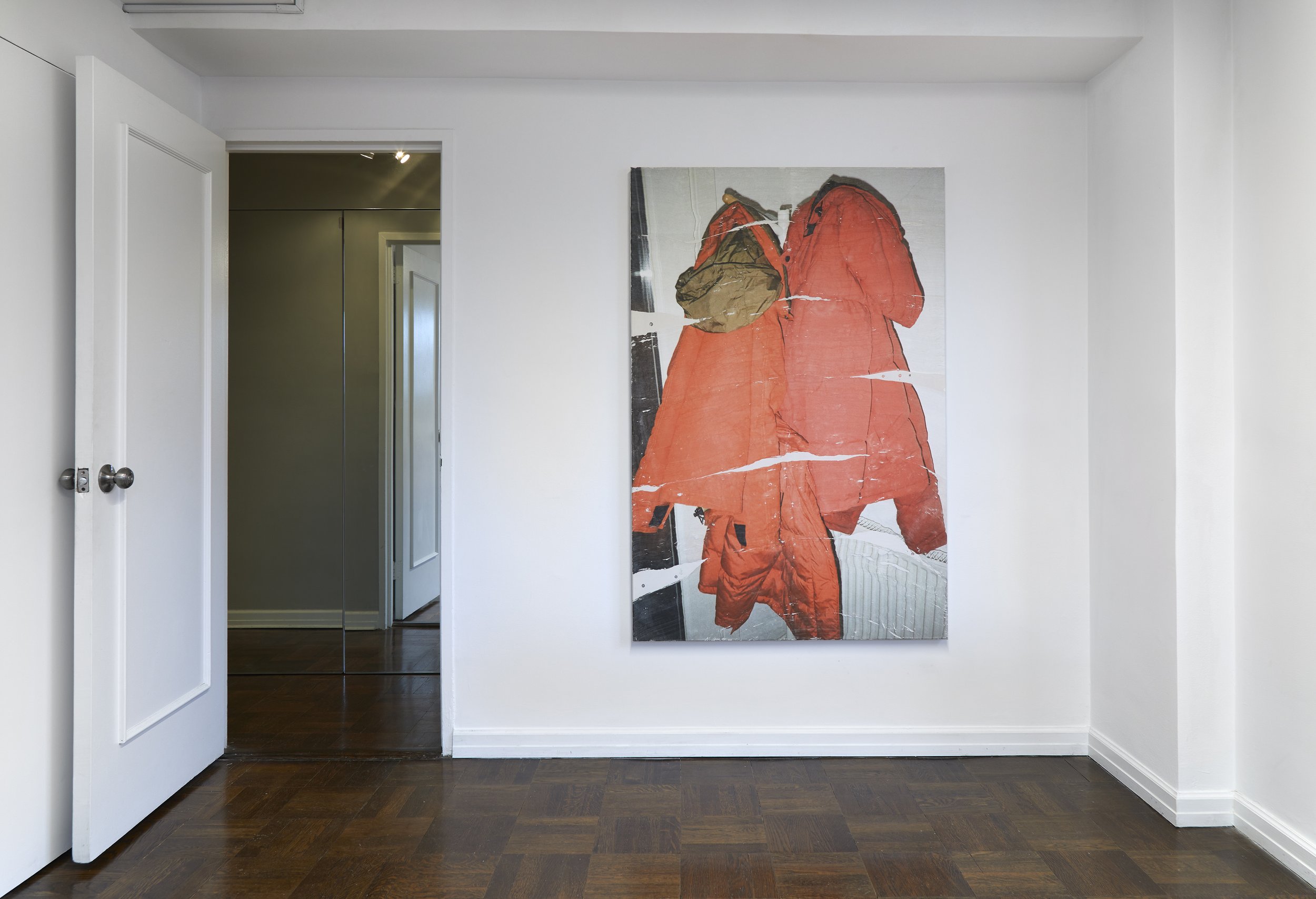Louis Reed
568 Grand St 10002
info@louisreed.nyc
Tatjana Danneberg
Tic Tac
September 25 – November 30 2022
Tatjana Danneberg Tic Tac’s for Breakfast In early 20 th century “colored photographs” paint was applied directly to film. Though photography promised mechanical reproduction and an objective impression of reality, it had to slip back into the subjective hand of the painter to attempt its goal, mimesis.
In Tic Tacs for Breakfast we see photographs and paint transferred to stretched canvas with the use of foil, wood glue, and a brush. The wooden support, wavy brushstrokes, sweeps of color, and familiar motifs -- a still life of jackets, a portrait, and a person dressing -- are signs of painting. The images in the show rest on painting’s solid structures while contemplating contemporary use of photography.
The intentions and stakes of taking pictures in the past 120 years, but particularly the past 20 years, have shifted immensely. Everyone can afford such a staggering volume of “exposures,” post-production, and dissemination that when we see a photograph there is the inherent understanding that it is probably not so much what life is like but what the photo maker wants reality to look like. What was once primarily a tool to document things as they are, has run away on the heels of digitization and the Internet to become a tool of staging.
When a photo is printed, deconstructed, obstructed with paint, and literally elevated on stretcher bars three centimeters off the wall, we are given signals to not only stop and contemplate what we are looking at but also what the tidal wave of images we are faced with means. A Boomer may wonder why anyone would photograph their jackets, a Millennial who remembers a time before makeup tutorials may be nostalgic for a pre-digital age, and a Zoomer might think the artist is just trying to show us how they “live their best life.” The answer as to whether we are looking at reality or a simulacra, paintings or photographs, and what each medium should do are not answered in the work, but the questions are there. Most importantly, Danneberg takes mundane, albeit beautiful images and like a fracking operation harvests the energy that occurs along fault lines, both generational and pictorial.






